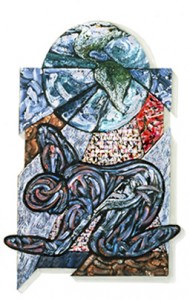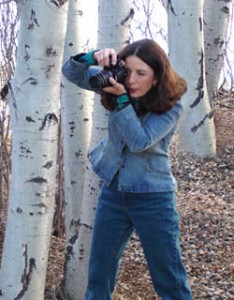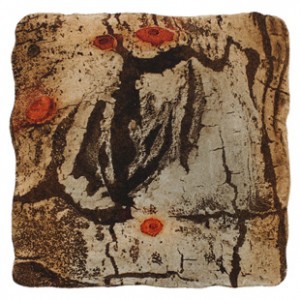Several years ago I did a series of shaped paintings that included earth day imagery, and the theme was “caring for Mother Earth”. Abstracted figures in various poses (submissive to empowered) were displayed in various positions with the planet Earth. Sharp angles of color depicting wind, rain, ice, water, soil, grass, and leaves cut through the background, the figures, and the earth shape. Obviously man and Mother Nature are intertwined, with man’s level of responsibility to the planet implicit. Please see my PORTFOLIO, Shaped Paintings to view my Four Seasons series.

Four Seasons, Winter
© 1993 Linda C. Everson, All Rights Reserved.
Mentors often influence my artwork. A master of modern art, Jasper Johns, did a series of paintings and prints called The Seasons. Those works were instrumental in the fragmented backgrounds, aggressive angles, natural patterns, (rain, snow), triangles and circles (earth), and faceless figures in my own Four Seasons series. Heavy brushstrokes and surface tension are common equivalents as well.
The New York Times review of Jasper Johns’ paintings The Seasons said it best:
If The Seasons does have central meaning, it may well be that catastrophes can be born, however awkwardly and painfully, and that a shattered self can be put together again. The potential of regenerative feeling, like the potential of painting itself, is ever present, if we know how to get through to it.
A wonderful book, Seven Master Printmakers, contains the prints, The Seasons by Jasper Johns, and discusses at length his creation of this series of prints. He worked and reworked the seasons theme in several different mediums and manifestations, with references to other great artists such as Picasso, Duchamp, and da Vinci.

